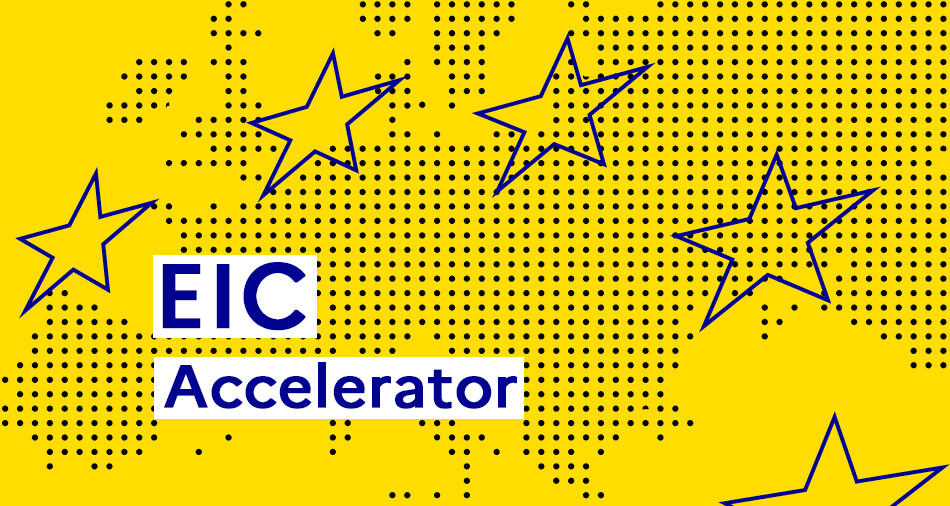Événement à la une

Le 10.09.2024
Webinaire EIC Accélérateur sur l'étape 2 "Full Proposal" - 10 septembre 2024
L'équipe du PCN EIC Accélérateur organise un webinaire le mardi 10 septembre de 11h à 12h.

ExpectedOutcome:
Water electrolysis for hydrogen production is a mature and well-established technology with major industrial deployments since the beginning of last century. Nevertheless, it still needs significant improvements. Despite the incremental type of research, a seek for breakthrough solutions should be incorporated into the research performed to transform the technology. These can include novel designs of the cells, as well as application of the disruptive components and introduction of innovative ideas synergistically resulting in systems able, through the continuity of the further research, to fulfil the needs of the gigawatt sized storage of renewable energy.
However, potential availability of systems of such magnitude is quickly transforming electrolytic hydrogen into an industrial commodity and significant barriers with regards to the use of electrolyser devices at such scale remain. Green hydrogen is on average still more expensive than hydrogen produced from reformatted natural gas. Henceforth, innovative actions will be required to: i) remarkably improve the voltage efficiency of water electrolysers ii) dramatically reduce the cost of these devices with the largest share for capital cost still occurring at the stack level, iii) reach durability and robustness levels that are compatible with today’s stationary energy systems and iv) address breakthrough solutions for innovative processes such as direct electrolysis of sea water and wastewater.
Hence, the development of disruptive components and cell concepts leading to a dramatical change in efficiency, lifetime, and reducing the total cost of ownership of hydrogen in electrolysis is the goal, transforming these electrolysers into devices of next generation. To the most part, classic alkaline (AEL) and polymer electrolyte membrane (PEM) electrolysis have stacks with materials and components that were developed in the last century. Thick inorganic diaphragms, rudimentary designs for electrodes and porous transport layers, PGM based catalysts and protective layers, and membranes that still fail to avoid gas-crossover at high differential pressure, can be significantly improved for next generation water electrolysers.
Innovative electrolysis cells can be only achieved by a multidisciplinary approach combining outstanding advances such as but not limited to materials science, nano-engineering, bio-hybrids catalysts (such as natural or engineered enzymes, peptides and protein based-maquettes or whole cells interfaced with electroactive materials and/or polymers or combined with organometallics clusters from separate synthesis), and innovative manufacturing approaches. It is expected creation of materials, components, and innovative cell designs that can completely change the paradigm of hydrogen production using devices with improved levels of efficiency, cost, and durability.
Project results are expected to contribute to all of the following expected outcomes:
Project results are expected to contribute to the following objectives and KPIs of the Clean Hydrogen JU SRIA:
Scope:
This topic aims at the development of new and disruptive cell concepts for improving efficiency, lifetime, and hydrogen production processes in the field of water electrolysis, while replacing costly materials on components of the cell and stack. The topic seeks the integration of recent advances in materials science and modern characterisation/fabrication tools, merged into innovative lab scale developments of components of electrolysis cells. The target is to realise at least single cells of TRL 4 and validate all innovative approaches using single cells and short stacks with min. 5 cells.
Proposals should explore more than one of the following innovations:
Development of Solid-oxide or Proton Conductive materials and cells are excluded from the scope of this specific topic.
It is expected to have access to application based as well as manufacturability requirements (through direct participation of a manufacturing company and/or through an advisory board), to foresee a scaling up of the validated solution.
Proposals are expected to collaborate and explore synergies with the projects supported under topics HORIZON-JTI-CLEANH2-2023 -07-02: ‘Increasing the lifetime of electrolyser stacks’ and HORIZON-JTI-CLEANH2-2022-07-01: ‘Addressing the sustainability and criticality of electrolyser and fuel cell materials’.
Applicants are encouraged to address sustainability and circularity aspects in the activities proposed.
Activities developing test protocols and procedures for the performance and durability assessment of electrolysers and fuel cell components proposals should foresee a collaboration mechanism with JRC (see section 2.2.4.3 "Collaboration with JRC"), in order to support EU-wide harmonisation. Test activities should adopt the already published EU harmonised testing protocols[1] to benchmark performance and quantify progress at programme level.
Activities are expected to start at TRL 2 and achieve TRL 4 by the end of the project - see General Annex B.
The JU estimates that an EU contribution of maximum EUR 3.00 million would allow these outcomes to be addressed appropriately.
The conditions related to this topic are provided in the chapter 2.2.3.2 of the Clean Hydrogen JU 2023 Annual Work Plan and in the General Annexes to the Horizon Europe Work Programme 2023–2024 which apply mutatis mutandis.
Specific Topic Conditions:
Activities are expected to start at TRL 2 and achieve TRL 4 by the end of the project - see General Annex B.
[1]https://www.clean-hydrogen.europa.eu/knowledge-management/collaboration-jrc-0_en